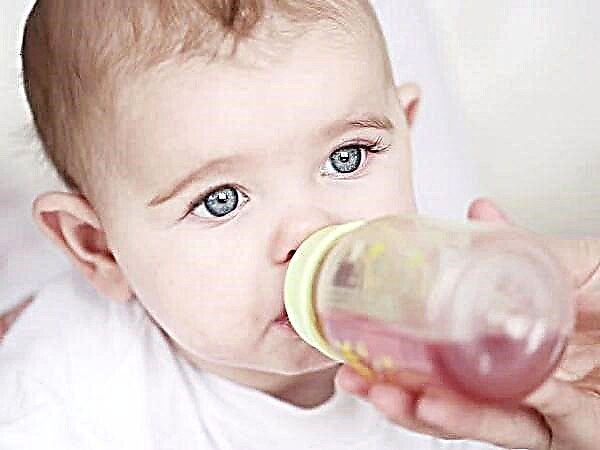
Among the many floor coverings, you can find a fairly suitable option that meets the requirements for cladding a children's room. Consider linoleum - as one of the types of flooring in a children's room.

Characteristics of natural linoleum
Of the features of this flooring, both positive and negative qualities stand out.

The advantages of such a floor surface:
- Environmentally friendly coating. Ingredients: jute, linen, cork and rubber;
- Hypoallergenic;
- Pleasant to the eye;
- The ability to experiment. When buying a covering in the form of tiles or panels, you can complete an original design sketch, while combining multi-colored elements;
- Wear resistance;
- Excellent resistance to temperature extremes;
- Resistance to mechanical stress;
- Antibacterial;
- Antistatic;
- Long service life;
- Color fastness;
- Possibility of laying underfloor heating (for some models).

Minuses:
- High price. Compared to synthetic materials, the price of natural linoleum is much higher: 2-2.5 times;
- Few design options and color shades;
- Bent natural linoleum breaks;
- Transportation requires additional effort;
- Difficult installation;
- Fixation is carried out only due to the natural adhesive composition;
- Thin material is easily damaged by sharp objects, even a regular pencil can easily tear the floor covering.


Varieties of linoleum
In addition to covering from natural fibers, manufacturers also produce some synthetic products. They can be divided into several groups.

By composition:
- Polyvinyl chloride (PVC) linoleum. It is made in three varieties: on fabric, foamed and heat-insulating non-woven fabric. Such a product is also divided into layers: it happens with one layer or with several. It has an unpleasant odor and high shrinkage.
- Rubber product or its second name - "relin". The coating of this material is two-layer, the base is bitumen or used crushed rubber. The outer layer of the Relin contains rubber and a pigmented filler. Differs in resistance to moisture and good plastic properties.
- Colloqueiline linoleum. The second name of such a product is "nitrocellulose linoleum". This thin coating has no base. It is characterized by fast flammability, excellent elastic properties, moisture resistance and an elegant gloss.
- Hyfthalic or alkyd coating... The basis is a woven component. It has the best sound and heat insulation properties, but it is very fragile.

By purpose and durability:
- For household functions. Such material is intended for use in residential buildings. Manufactured with foam or polyester. The thickness is only 4 mm. Has a lot of design solutions. The features are: ease of installation, unpretentious operation, softness and quick wear (under heavy loads and frequent walking on it).
- Semi-commercial option. It is often used in residential buildings, hotels and offices. Differs in a relatively long service life due to an additional protective coating of 0.7 mm. The structure of the material is similar to that of household linoleum.
- Commercial type. Used for places with a lot of people. The base is polyvinyl chloride. Durability is achieved through a durable outer layer. The appearance remains the same over time.

By structure:
- Homogeneous type. The structure of the coating is based on a uniform mixture of PVC and pigments. The design of this product is penetrated through the entire surface. It is used in places with a large stay of people due to its good wear resistance properties.
- Heterogeneous variant. Multi-layer material, can have up to 6 layers of PVC. The base is fiberglass. A footrest typically uses one of three components: fabric, non-woven fiber, or foam.
- Baseless coating. A cheap and short-lived option for linoleum. Differs in a thin structure: from 1.5 to 3 mm. When installing such a coating, it is necessary that the surface is perfectly flat.
- Basic type... It can be applied to almost all bases due to its elastic characteristics. One of three variations is used as a substrate: fabric, non-fabric or thermal insulation material.

Purpose and loads
Thanks to the marking, each batch of linoleum has a certain criterion by which one can judge its purpose, and what loads the material can withstand.

The first numerical designation indicates its purpose:
- 1 - suitable for rooms with low traffic.
- 2 - for residential premises.
- 3 - for offices.
- 4 - for industrial premises.
The second numerical designation from 1 to 4 indicates the loads withstand by linoleum, where 1 - for minimum, 4 - for maximum.

How to choose for different ages
When buying, it is worth paying attention not only to the color design of the floor surface, but also to the thickness of the coating, and it is also necessary to take into account the age of the child.

1-3 years old
For children from 1 to 3 years old, you should not buy material with bright colors. It is better to purchase linoleum of calm tones - this helps to normalize the child's psyche, and it is better to leave the brightness of colors for toys. Thermal insulation of the floor must be achieved through the thickness of the coating, therefore, when choosing, pay attention to a surface with an indicator of at least 3 mm. Additionally, there must be a protective layer on the material of at least 0.15 mm.
The choice for this age is best done in favor of natural or PVC linoleum. If this is the second option, then pay attention to its basis. It should be made of padding polyester, felt or foam.
Choose material carefully if you plan to make a "warm floor" in the children's room.

3 to 10 years old
For a boy or girl between the ages of 3 and 10, they usually use printed synthetic fibers. The thickness is chosen on the order of 3 mm with an additional protective layer of 0.2 mm.
Children of this age love to spend time on the floor, so insulating material should be used as a substrate.

11-16 years old
Children from 11 to 16 years old become less mobile. Household games on the floor are being replaced by other interests. The print is changing: now it is necessary to add adult notes and neutral colors.
For this age, the recommended coating thickness should be at least 1.5 mm, and the additional protective layer should be at least 0.2 mm.

To determine the quality of a product, we have selected a number of criteria. Tips on choosing will come in handy for beginners in such an important matter as choosing a floor covering for a children's room.
Consider the following nuances:
- Width of the provided goods... Measure the facing surface before purchasing. The material must be purchased with a margin, since there may be a discrepancy between the surface and the geometry of the room.
- Smell... Natural linens have the scent of flax oil. If you feel an unpleasant and pungent smell, then such products are of poor quality, or the technology for their production has not been properly followed. It should be discarded.
- Appearance... The gloss should not be too strong. The drawing on the canvas should be clear. Blisters, creases or bubbles indicate poor product quality. The protruding layers should be visible from the end.
- Strength... The product must be durable so that it can withstand mechanical stress and stress.
- Surface. Linoleum should have a smooth but non-slip surface.
- Manufacturer... Branded products with an unsurpassed reputation always use the necessary rules and regulations during production and storage.
- Certificate... Demand this document from the seller - its presence indicates the good quality of the product.
- Marking... Pay attention to the packaging: there is all the information you need.
- Purchased item should not be stored in multiple layers: curled into a roll - this is its proper storage. Curves spoil the surface.
- Fixation tape should not be produced from the front surface - residual effects from the sticky structure will be difficult to remove.

Installation recommendations
The installation of the floor covering is also an important point.

Below are some guidelines for this process.
- It is better to lay the material on a plywood or OSB base. For complete comfort, an insulating layer can also be placed under the base.
- The underlay can be omitted if the base layer of the material has a fairly thick structure (felt or expanded polyvinyl chloride). Other options should provide for laying on the base of the roll cork.
- Installation should only be carried out using the adhesive recommended by the linoleum manufacturer. It must be natural and not react with the underlying flooring layer.
- It is strongly recommended to ventilate the room where the work was carried out for at least a day after the completed work. And the child must be moved into the room at least in a week.
A video on how to lay linoleum with your own hands can be viewed below.
Operating tips
In order to keep your flooring the same throughout its life, there are a number of floor care guidelines that need to be followed.
What not to do
- This coating is afraid of hot water. If you do this with frequent cleaning, then "bald spots" will form on the top layer.
- Open access from direct sunlight can also damage the linoleum - it will fade.
- The material laid on the balcony will become unusable from the effects of cold. Cracks and deformation will appear on it.
- Excessive wetting with water will damage the PVC coating.
- Rubbing the surface with abrasives and a metal sponge will scratch and leave marks.
- Sharp objects - heels, furniture legs, knives or forks - will leave their mark on the laid PVC linoleum.
- The use of bleaches will harm the coating due to its chlorinated composition - stains will appear and the color will fade. In this case, it is recommended to dilute the concentrate with water.

There is some protection for the linoleum surface from various threats: liquid, damage, ultraviolet radiation and shoe marks. It is necessary to apply polymer mastic or polish to the surface. The resulting film will protect against all these adversities.
For the correct application of protection, it must be done in two layers and leave the material for 8-10 hours, while not loading it.

To prevent scratches or cracks from appearing on the surface, it is required to apply drying oil or linseed oil to the surface. This operation should be done 1-2 times a month.

Reviews
Of the majority of manufacturers, the following popular linoleum brands stand out, which can be learned from reviews from parents and just buyers:
- Forbo Flooring Sistems... Differs in high-quality products, however, the installation requires a highly qualified master.
- LG Haysis... Linoleum of such a manufacturer is easy to care for, does not fade, and has a rather low price.
- Tarkett... This is a domestic manufacturer. Its products have features, including: the appearance of an unpleasant odor and pink color, loses its original appearance. But parents acquire this material because of its original style and excellent wood imitation. Suitable for a room for children of different ages or different sexes.
Examples in the interior of the nursery
There are many examples in the interior of a nursery, here are some of them.
Linoleum, imitating a wooden structure, perfectly fit into the interior of the girl's room.

The covering of the children's room for the boy continues the general theme of the interior in light colors.

The beige color of the flooring easily harmonizes with the calm shades of the children's room.




